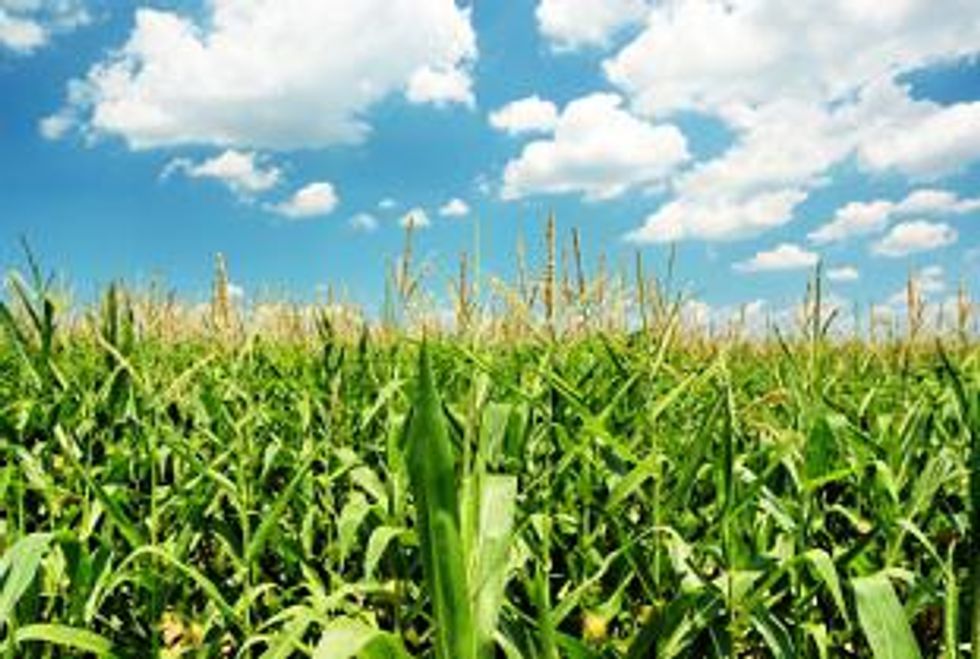After record-breaking forecasts of North American corn and soy bean crop output, hot and dry conditions have decimated this year’s crop yield expectations. With all this volatility, can soft commodities actually protect investors against inflation?
With such volatility and price fluctuations witnessed in agricultural markets this year, corn, soy, sugar or coffee seem unlikely candidates to act as a hedge against inflation. But that’s exactly what John Coast Sullenger of GAIA Capital stated in a recent CNBC interview.
Sullenger suggested that agriculture has the properties of an inflation hedge because of the industry’s projected solid and stable growth for decades to come.
“The FAO (Food Agriculture Organization) is saying we have to increase food production to meet demand by 50 percent by the year 2030, and by 80 percent by the year 2050. So that growth is there” Sullenger told CNBC’s World Exchange.
During times of monetary expansion and instability, gold, oil and real estate are used by investors to provide a hedge on other portfolio holdings whose “intrinsic” value or utility in the marketplace can be distorted by manias.
Agricultural commodities typically provide investors with a positive, if only modest, appreciation in the value of goods over the long term due to their perceived steady inflation-adjusted growth and value retention.
However, not everyone agrees that agricultural commodities are immune to inflated valuations. Tom Vosa, Head of Market Economics Europe at National Australia Bank agreed with Sullenger on the FAO’s projections for growth, but did not have the same faith in the current rate of investment into soft commodities.
“If you speak to the USDA though, they reckon that most of that [doubling crop production by 2050] can be done if we only have two percent productivity growth per year, in essentially agricultural output. Now that means that the investment needed doesn’t necessarily need to generate this very high price [currently seen in various soft commodity markets].”
Ian Henderson, former manager of JPFM Natural Resource Fund at JP Morgan, said in a MoneyWeek interview in 2007, long before the current soft commodities run, that soft commodities are ill-suited to hedge inflation risk.
“[M]ost [agricultural commodities] are priced because of weather effects, or inadequate or excess planting and it’s hard to think of a structural argument for most soft commodities. We’re not short of agricultural land,” Henderson said.
But despite the disbelief in the structural argument for soft commodities, many funds have allowed investors to bank on growing agricultural demand through farm and food-based Exchange Traded Notes (ETNs), giving investors direct access to a mix of food-specific or agricultural commodities.
ETN investment options
The iPath Dow Jones-UBS Grains Subindex Total Return ETN (ARCA:JJG), is a grains-focused ETN weighted towards corn, wheat and soy beans/soybean oil, and is currently composed of futures contracts traded on US exchanges.
E-TRACS UBS Bloomberg CMCI Livestock ETN (ARCA:UBC) measures the collateralized returns from a basket of futures contracts representing the livestock sector. This ETN is focused on commodity futures contracts diversified across cattle and lean hogs with constant maturities of three and six months in the U.S.
Different commodities, different trends
Holding specific commodities has also been identified as an effective way to access a particular trend. Sugar, soy beans and coffee are often held as highly touted commodities, but for different reasons.
For instance, Barclay’s Capital is most bullish on sugar for its role in the production of ethanol, said Barclay’s Director Alex Robinson in the same MoneyWeek article. The correlation between sugar and soy beans in relation to the growing middle classes of the BRIC (Brazil, Russian, India and China) nations makes a good argument for those who feels that growth is a certainty.
Vosa, however, fears that too many investors may already be looking at agricultural commodities as an inflation hedge. “What I worry about at the moment is that soft commodities are having a massive rally because you are looking for an inflation hedge and you believe everywhere central banks are essentially printing money.” In the end, this activity itself “will to lead inflation,” Vosa said.
Securities Disclosure: I, James Wellstead, hold no direct investment interest in any company mentioned in this article.
